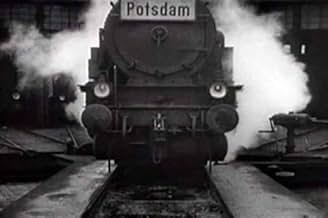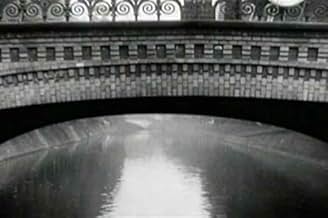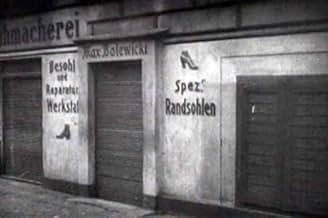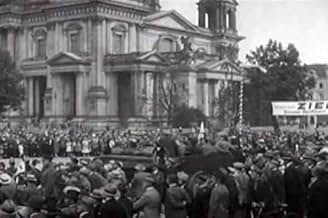IMDb RATING
7.6/10
5K
YOUR RATING
This movie shows us one day in Berlin, the rhythm of that time, starting at the earliest morning and ends in the deepest night.This movie shows us one day in Berlin, the rhythm of that time, starting at the earliest morning and ends in the deepest night.This movie shows us one day in Berlin, the rhythm of that time, starting at the earliest morning and ends in the deepest night.
- Director
- Writers
- Star
Paul von Hindenburg
- Self
- (uncredited)
- Director
- Writers
- All cast & crew
- Production, box office & more at IMDbPro
Featured reviews
This is a silent era documentary showing a day in the life of Berlin starting from the morning to the late night. It shows people and places in their day to day existence. It's artistic like showing the machinery at work. It's fascinating to see people in their everyday lives. It's amazing to see the places especially since most of them were destroyed in WWII. It's great to see living lives in this time era. This is a world in between the two Great Wars. The economic crash has yet to happen. It's a Germany which still functions with its old wealth and new technology. It's a working city. It's a great time capsule and a terrific movie by itself.
Place: Berlin. Span: one day in the life of the city circa 1927 captured by the camera. We enter by train.
One way to watch this, the most obvious I guess, is as a historic document, a snapshot of life as it was once. The old world just barely impregnated with faint traces of an archaic modernity; street cars, neon signs, busy streets, things we have now but were then just beginning to greet people. So with this mindset, as a museum piece that depicts an old version of our world.
This is fine, but I urge you to engage it differently if you can.
What if instead of merely observing exhibits from behind a glass panel, we get out from the museum into actual life? Instead of settling in for this as a historic - meaning dead, embalmed, academic - glimpse, we invigorate it with life that we know, with sunlight, texture, sound, breath that was then as real as it is now? How would it be in absolute stillness to feel present in the middle of a modern life?
This is how the film was intended after all, it's plainly revealed this way. Not a fossil for generations of curious tourists from the future, but a celebration of life 'now', modern, busy life out the window.
So no longer an old world that faintly reminds us of our own, but a new world, exciting, alluring, mysterious, alive with myriad possibilities. New things everywhere, novel pathways to travel, environments to experience. What I mean is, try to see the city as though you just got off the train and were visiting for the first time. It ends with the camera spinning around a flashing neon sign cut to match with fireworks erupting in the night sky.
I urge you to inhabit this, settle for nothing less. Let its neon flowers blossom in you.
One way to watch this, the most obvious I guess, is as a historic document, a snapshot of life as it was once. The old world just barely impregnated with faint traces of an archaic modernity; street cars, neon signs, busy streets, things we have now but were then just beginning to greet people. So with this mindset, as a museum piece that depicts an old version of our world.
This is fine, but I urge you to engage it differently if you can.
What if instead of merely observing exhibits from behind a glass panel, we get out from the museum into actual life? Instead of settling in for this as a historic - meaning dead, embalmed, academic - glimpse, we invigorate it with life that we know, with sunlight, texture, sound, breath that was then as real as it is now? How would it be in absolute stillness to feel present in the middle of a modern life?
This is how the film was intended after all, it's plainly revealed this way. Not a fossil for generations of curious tourists from the future, but a celebration of life 'now', modern, busy life out the window.
So no longer an old world that faintly reminds us of our own, but a new world, exciting, alluring, mysterious, alive with myriad possibilities. New things everywhere, novel pathways to travel, environments to experience. What I mean is, try to see the city as though you just got off the train and were visiting for the first time. It ends with the camera spinning around a flashing neon sign cut to match with fireworks erupting in the night sky.
I urge you to inhabit this, settle for nothing less. Let its neon flowers blossom in you.
Berlin, Symphony of a City is a remarkable historical document of the mighty city before its Wagnerian capitulation within less than twenty years of its filming. Along with Paris, Berlin was the epicenter of a Europe emerging from World War 1 into the Roaring Twenties and director Walter Ruttman for the most part captures the energy and pace of the 20th century metropolis.
Moving from morning to night Symphony emphasizes the cities industrial muscle but also divides evenly portraits of the have and have nots of Berlin, the grime as well as the glitter. It is a city on the move and move it does from the crowded sidewalks to the congested avenues and its varied populace . It is in the faces of these Berliners that the film holds its greatest fascination for me watching children playing and youth sporting events with the knowledge that most of them will be of draft age for the oncoming conflagration that will reduce this city to rubble.
The documentary does have problems with some scenes clearly staged (in one case a suicide filmed in close-up) and a roller coaster scene is overlong but overall when put into historical context this is a valuable visual document of a city that is extinct as Atlantis.
Moving from morning to night Symphony emphasizes the cities industrial muscle but also divides evenly portraits of the have and have nots of Berlin, the grime as well as the glitter. It is a city on the move and move it does from the crowded sidewalks to the congested avenues and its varied populace . It is in the faces of these Berliners that the film holds its greatest fascination for me watching children playing and youth sporting events with the knowledge that most of them will be of draft age for the oncoming conflagration that will reduce this city to rubble.
The documentary does have problems with some scenes clearly staged (in one case a suicide filmed in close-up) and a roller coaster scene is overlong but overall when put into historical context this is a valuable visual document of a city that is extinct as Atlantis.
It's like Koyaanisqatsi of 20s! It's miraculous! Awesome! It's all about the idea of a great city moving forward up-tempo but still having quite common problems of Germany's twenties poverty and exacerbation, nevertheless Berlin being one of the most fashionable cities of Europe of that particular time. But it's not the movie's main account. Its atmosphere was created by excellent cameraman work. The frame when a train moves right into you and then suddenly turns away is quite impressive. Never seen that advanced cameraman till Citizen Kane. I'd also definitely recommend watching Ruttmann's 'Lichtspiel Opus I ', an avant-garde animated movie created in 1921.
This fascinating classic never loses its ability to capture the attention and stimulate the imagination of its viewers. The technique is creative and resourceful, the photography is beautiful, and the images are memorable. Everything fits together to make the idea work wonderfully well.
The opening sequence with the train is an exciting and well-conceived way to start the movie. As the pace picks up, the rush of images creates an abstract but very realistic sensation, and this train 'ride' is so enjoyable that you almost don't want it to stop.
But it's when the train reaches the station that the main part of the movie begins, presenting a very interesting stylized portrait of a typical day in Berlin, through a carefully-chosen variety of scenes and sights. It's interesting to see how the train imagery keeps coming back from time to time, and this, along with the obvious passage of time as the day progresses, gives it a coherence that makes it much more than just a collage of interesting images and scenes.
There are many interesting individual sequences, but what makes it such a gem is the way that everything fits together. The overall effect is remarkable, and it really has to be seen to be appreciated.
The opening sequence with the train is an exciting and well-conceived way to start the movie. As the pace picks up, the rush of images creates an abstract but very realistic sensation, and this train 'ride' is so enjoyable that you almost don't want it to stop.
But it's when the train reaches the station that the main part of the movie begins, presenting a very interesting stylized portrait of a typical day in Berlin, through a carefully-chosen variety of scenes and sights. It's interesting to see how the train imagery keeps coming back from time to time, and this, along with the obvious passage of time as the day progresses, gives it a coherence that makes it much more than just a collage of interesting images and scenes.
There are many interesting individual sequences, but what makes it such a gem is the way that everything fits together. The overall effect is remarkable, and it really has to be seen to be appreciated.
Did you know
- TriviaThe shooting was done over 18 months though the resulting feature gives the impression of just one day in the city.
- ConnectionsFeatured in Lulu in Berlin (1984)
- How long is Berlin: Symphony of Metropolis?Powered by Alexa
Details
- Release date
- Country of origin
- Language
- Also known as
- Berlin: Symphony of a Metropolis
- Filming locations
- Berlin Cathedral, Mitte, Berlin, Germany(aka Berliner Dom)
- Production companies
- See more company credits at IMDbPro
- Runtime
- 1h 5m(65 min)
- Color
- Sound mix
- Aspect ratio
- 1.33 : 1
Contribute to this page
Suggest an edit or add missing content




















